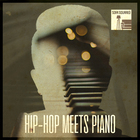Latest releases
Recent Releases
-
-
 HOT
►i
HOT
►i
Saint Evo - Afro Collections
by: Loopmasters
-
 ►i
►i
Florian Gasperini - Organic Melodic House
by: Beatport Sounds
-
 ►i
►i
Country Mile
-
 ►i
►i
Breaks Love
by: Amalfi Sounds
-
 ►i
►i
Codex Vol. 5 - Techno Samples
by: Codex Samples
-
 ►i
►i
Afro House Go Deep 2
by: 5Pin Media
-
 ►i
►i
Detonate: DnB Vocals
by: Rewind Samples
-
 ►i
►i
Rolling Techstep DnB
by: OneZero Samples
-
 ►i
►i
Latin Minimal Tech 2
by: HY2ROGEN
-
 ►i
►i
Uptempo Hardcore 2
by: Singomakers
-
 ►i
►i
Cinematic Boom Bap
by: BFractal Music
-
 ►i
►i
Bombardier: Analog Overdrive – ASSET
-
 ►i
►i
Label Sampler 4
by: Abstract Sounds
-
 ►i
►i
Drum & Bass Mega Collection
by: Rewind Samples
-
 ►i
►i
Trance Vision by Dave Parkinson
by: Black Octopus
-
-
-
 ►i
►i
Ice Cream Hyperpop
by: Function Loops
-
 ►i
►i
Treptow Techno
by: Resonance Sound
-
 ►i
►i
Minimal Deep Tech Vol. 4
by: Toolroom
-
 ►i
►i
Stripe - Organic House
by: Zenhiser
-
 SALE
►i
SALE
►i
Pro Drums American Punk Rock
by: Image Sounds
-
 ►i
►i
Spring Bundle
-
 ►i
►i
Aberrant Bass Music
by: Loopmasters
-
 HOT
►i
HOT
►i
Soul Funk Deep House 2
by: Loopmasters
-
 HOT
►i
HOT
►i
Ignition - Hardgroove Techno
by: RV Samplepacks
-
 ►i
►i
New World Folklore
by: Loopmasters
-
 ►i
►i
Afro House Uzuri
by: IQ Samples
-
 HOT
►i
HOT
►i
Timeless Jungle Bundle
by: THICK Sounds
-
 HOT
►i
HOT
►i
Melodic Techno Vocal Multiverse
by: Singomakers
-
 ►i
►i
Hypnotic House
by: Abstract Sounds
-
 ►i
►i
ELIXIR: Drum & Bass
by: Ghost Syndicate
-
-
-
 ►i
►i
Odissea - Driving Techno
by: Keep It Sample
-
 ►i
►i
Latin Essentials Bundle
by: Loopmasters
-
 ►i
►i
Icy Trap
by: Famous Audio
-
 ►i
►i
Harmonic Breaks - House Vocals
by: DABRO Music
-
 ►i
►i
Dropgun Samples - Melodic Techno Bundle
by: Dropgun Samples
-
 ►i
►i
Epic Hybrid Hip Hop
by: BFractal Music
-
 ►i
►i
Latin Deep Tech
by: House Of Loop
-
 ►i
►i
Male House Vocals
by: UNDRGRND SOUNDS
-
 ►i
►i
Industrial Strength - Raw Hypnotic Techno
-
 ►i
►i
Downtempo House
-
 ►i
►i
Dark Ambient Bundle
by: Blind Audio
-
 ►i
►i
Dubstep Sampler
by: THICK Sounds
-
 ►i
►i
New Tales From The West - Western Soundtracks
by: THICK Sounds
-
 ►i
►i
Modern User Interface
by: SFXtools
-
 ►i
►i
Toolroom Trademark Series - Crusy Vol. 3
by: Toolroom
-
-
-
 ►i
►i
Blame Game by Ghostatic
by: Black Octopus
-
 ►i
►i
Future Pop Acapellas
by: Function Loops
-
 ►i
►i
Rival Melodic Bass
by: Dropgun Samples
-
 ►i
►i
FDF (Italy) Presents In Da House
by: Bingoshakerz
-
 ►i
►i
Afro House Drums
by: Wavetick
-
 ►i
►i
Kunte Afro House
by: Loopmasters
-
 HOT
►i
HOT
►i
Middle Eastern Auras
by: Organic Loops
-
 ►i
►i
Mid Tempo Soul
by: TONE KITCHN
-
 AWARD
►i
AWARD
►i
Mexican Essentials
by: Loopmasters
-
 ►i
►i
Classic 80s Hip Hop
by: Element One
-
 ►i
►i
Paul Sirrell: Serum Dance Master Collection
by: Rewind Samples
-
 ►i
►i
Unity Samples - Vocals & Fx By Juli Aristy
by: Unity Records
-
 HOT
►i
HOT
►i
Bigroom Techno Hyperdrive
by: HY2ROGEN
-
 ►i
►i
Afro House Mainstage Vol.1
by: Munchies Jukebox
-
 ►i
►i
Abstract Sounds - Raw Hypnotic Techno
by: Abstract Sounds
-

-
 Studio
Studio
Artist Series: Best of Deep House
-
 Studio
Studio
Artist Series: Best of Techno
-
 Studio
Studio
Artist Series: Best of Drum and Bass
-
 Studio
Studio
Artist Series: Best of Hip Hop
-
 Studio
Studio
Artist Series: Best of House
-
 Studio
Studio
Artist Series: Best of Tech House
-
 DAW Tutorials
DAW Tutorials
How to create your own vocal chops
-
 Studio
Studio
How to get Samples in Key with your Track
News and Reviews
-
 review
review
Unity Records – Unity Samples Vol.31 by Tony Romanello Future Music Review
-
 review
review
Organic Loops - Folk Fiddle - Computer Music Magazine Review
-
 review
review
Bingoshakerz - Organic Jazzy Downtempo 2 - Computer Music Magazine Review
-
 review
review
Bingoshakerz - Progressive House - Computer Music Magazine Review
Loopmasters is the definitive place to find the best sample libraries for your music. With the latest sounds from established producers, industry heavyweights and upcoming beatmakers, provided as royalty free samples and loops. Every one of our sample packs is crammed with the best music samples, meticulously produced, prepared and formatted for smooth integration in your workflow.
We’ve got the best sample packs for House, Techno, Drum & Bass, EDM and loads more, with live music sample packs and instrument sample libraries to embellish and develop your unique sound. Our royalty free music samples come from artists, producers and instrumentalists across the globe, ensuring you get the best loops played and recorded at the highest quality by seasoned professionals and top studio engineers.
Download royalty free sounds from our website or using Loopcloud, the online cloud-based browser where you’ll find exclusive content each week free to add to your music sample library. Browse our entire catalogue and discover more royalty free music loops - download samples you like using our intuitive software, which integrates seamlessly with the major daws.
Our royalty free music samples come organised and labeled so you can be sure of staying in key and getting the tempo right, and in the most popular formats, with rex loops, acidized wavs and apple loops to suit your preference.


































